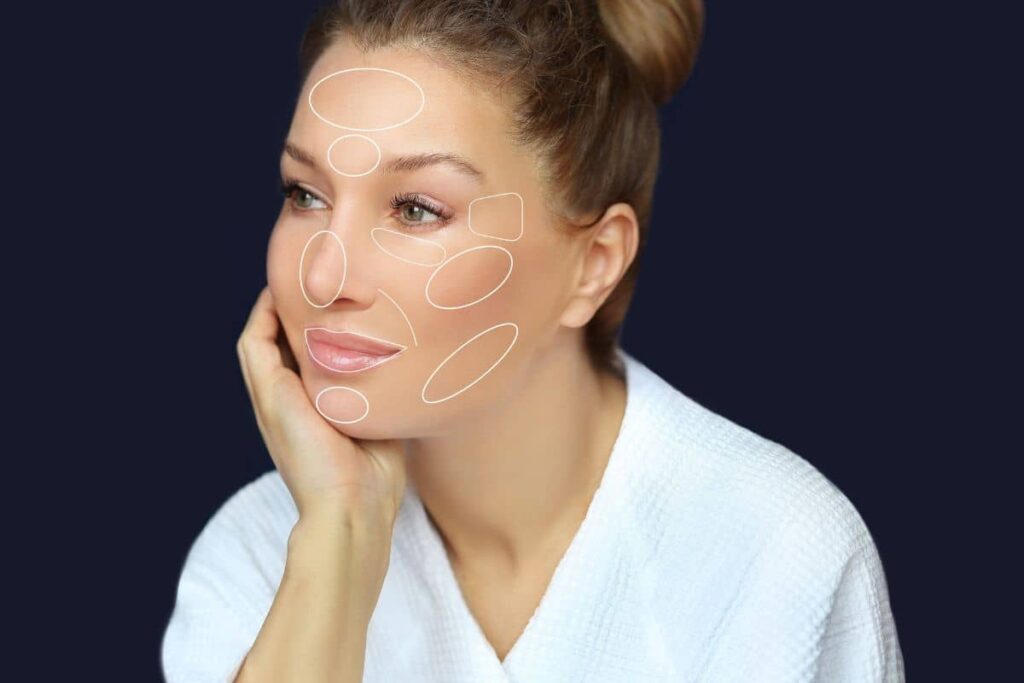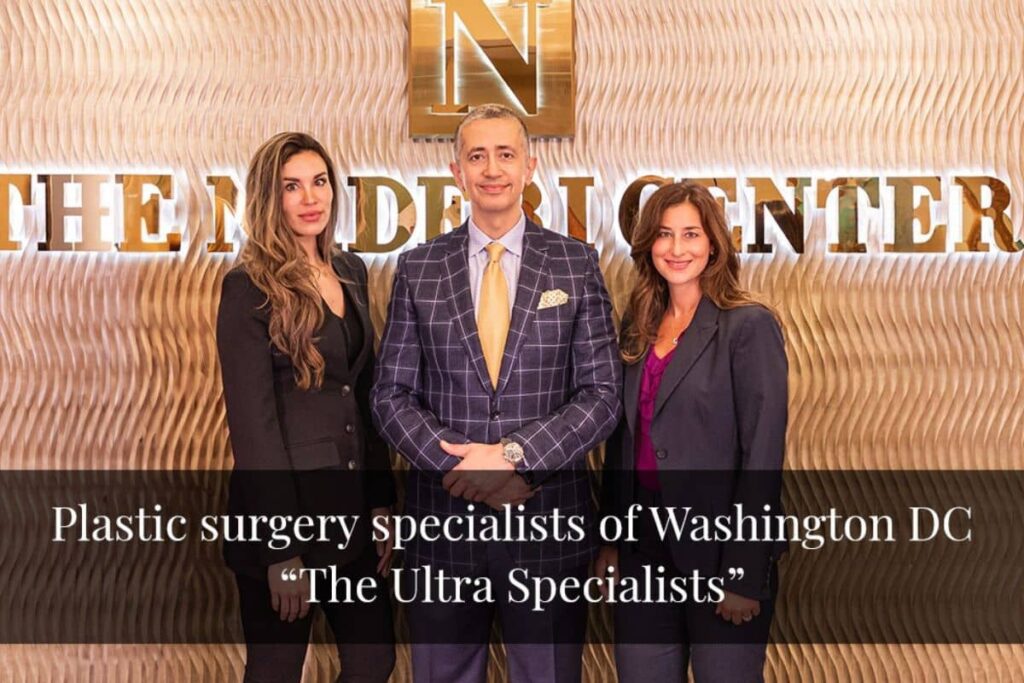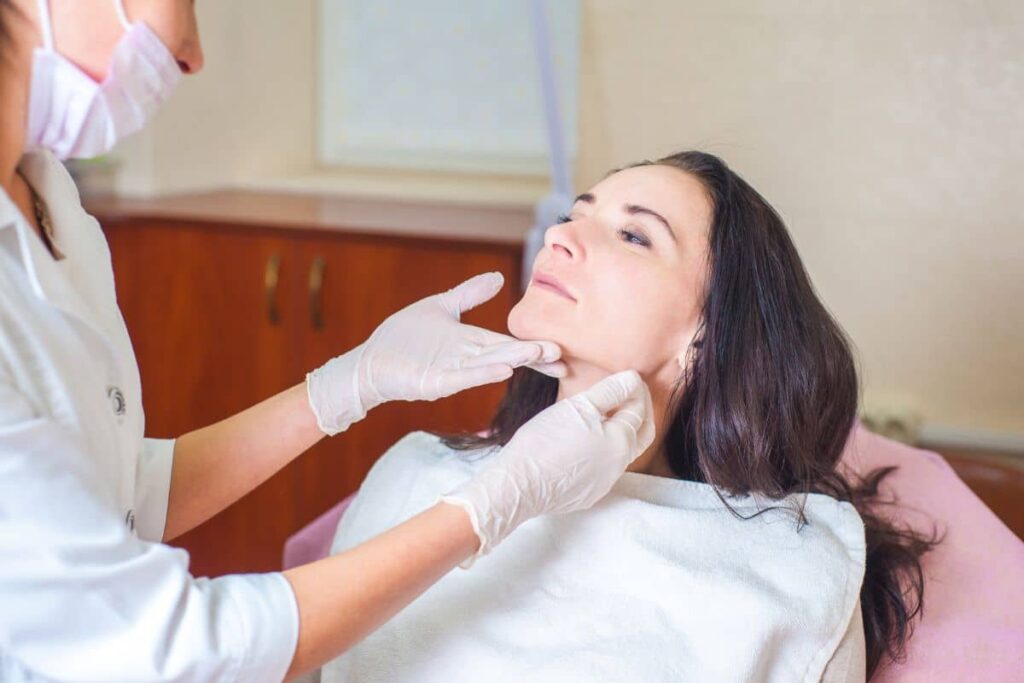It’s one of the most heartbreaking trends we are seeing in our practice: an increasing number of patients walking through our doors with faces distorted by poorly performed cosmetic fillers. These patients feel anxious, embarrassed, and frustrated, and often feel hopeless that the damage can be undone.
The truth is: botched fillers are becoming far too common. And the reason lies in the gaps of training and oversight in the aesthetic industry.
At The Naderi Center for Plastic Surgery and Dermatology, we have developed a national reputation for expertly correcting poorly done filler work. In this blog, we want to shed light on why this happens, why it’s so dangerous, and how our board-certified physicians can help you safely reverse these complications.

Things to Know About Botched Fillers
- Botched fillers are more common than ever due to poor injector training.
- Signs of bad filler include lumps, puffiness, migration, and facial distortion.
- Filler complications can happen anywhere on the face, not just the lips.
- Quick fixes or cheap treatments often make the problem worse.
- The Naderi Center specializes in correcting botched filler results with compassion and precision.
Why Are Botched Fillers So Common?
There is a massive boom in demand for nonsurgical facial treatments, but the quality of training for injectors has not kept pace.
In most states, regulations are loose. Many injectors are not board-certified physicians — some are nurses, physician assistants, or even unlicensed individuals who attend a quick weekend course on filler injections.
Facial fillers require not only an artistic eye but an expert understanding of facial anatomy and vascular safety. Without this, patients are left vulnerable to:
- Overfilled, distorted features
- Lumps, bumps, and nodules
- Filler migration
- Tyndall effect (bluish discoloration under the skin)
- Serious vascular complications (skin necrosis, blindness)
We see patients with lip filler migration, bulky cheeks, unnatural jawlines, under-eye puffiness, and complications from “liquid rhinoplasties.” In many cases, the original injector lacked the skill or knowledge to recognize or correct these issues.
The Emotional Toll of Botched Fillers
We know this goes deeper than looks. Many patients feel anxious, ashamed, along with being regretful about the way their faces change. Our role is not only technical but emotional, helping patients feel heard, supported, and empowered throughout the correction process.
The Gaps in Education and Training
Most training courses for injectables do not adequately prepare injectors to manage complications. Providers are often taught how to inject — but not what to do if something goes wrong.
This is why we so strongly advocate that only highly trained, board-certified physicians with in-depth anatomical expertise should be performing these procedures.
Unfortunately, many patients are drawn to the lowest price rather than the highest level of skill, and the result is often a need for expensive, multi-step correction later.
How Dermal Fillers Can Go Wrong — In Every Area of the Face

Fillers can be botched virtually anywhere in the face:
- Lips: stiff, duck-like appearance, filler migration above the vermillion border
- Cheeks: “pillow face,” heaviness, facial distortion
- Under Eyes (Tear Troughs): puffiness, swelling, bluish hue (Tyndall effect)
- Jawline: overly masculine, boxy angles
- Chin: unnatural projection or lumpiness
- Nose (Liquid Rhinoplasty): asymmetry, filler bumps, vascular risk
- Nasolabial Folds / Marionette Lines: bulky, exaggerated folds
- Temples / Forehead: vascular risks, filler migration
Each area requires customized, precise correction by an expert injector, not a one-size-fits-all approach.
The Naderi Center’s Approach to Filler Reversal
At The Naderi Center, filler correction is performed exclusively by our board-certified physicians:
- Dr. Shervin Naderi — Facial Plastic Surgeon
- Dr. Jessica Kulak — Facial Plastic Surgeon
- Dr. Alexandra Snodgrass — Dermatologist
We do not delegate filler correction to nurses or assistants. Why? Because your safety demands physician-level expertise.
Our process includes:
- Comprehensive facial assessment
- Strategic use of hyaluronidase to dissolve poorly placed hyaluronic acid filler.
- Gradual staging of correction for a natural look
- Optional re-injection (once the face is fully ready) with advanced techniques


See why patients nationwide trust The Naderi Center
Book a personalized consultation with our expert physicians to begin your safe, correction plan.
Safety First — Why You Should Not “Fix” Fillers With Another Untrained Injector
Many patients try to fix bad filler by simply seeing another low-cost injector or attempting more filler to mask the problem. This often makes the situation worse.
Filler correction is a medical procedure and it requires advanced knowledge of facial anatomy, filler behavior, and vascular safety. Done improperly, it can cause tissue damage or worsen asymmetry.
Trust your face to true experts.
Pricing for Reverse Botched Fillers at The Naderi Center
We are transparent about our fees:
- Initial Consultation & Injection Session: $5,000
Includes full assessment and initial hyaluronidase melting treatment. - Follow-Up Melting Sessions: $500 per session
Most patients require 2-4 sessions for full correction. - Re-injection (Optional): Charged at our standard practice rates.
Correction is a process, not a single treatment, and we prioritize achieving the safest, most natural result possible.
How to Prevent Botched Filler Injections
We fix bad outcomes, but the best approach is to stop them from happening. This is how you can lessen your risk:

1. Choose the Right Medical Expert — and Verify Their Credentials
The most important step in preventing botched fillers is selecting a board-certified medical professional — ideally a facial plastic surgeon or dermatologist with advanced training in anatomy and injection safety.
A trained specialist will answer your questions and explain their method clearly. They also put your long-term results first before quick outcomes.
2. Beware of Bargain Deals
Low-cost filler deals often come with high-cost mistakes. Cheap services may use:
- Unlicensed or undertrained injectors
- Counterfeit or expired fillers
- Unsafe techniques that jeopardize your health
- Your face is not the place to cut corners.
3. Know What Good Filler Should Look Like
Natural filler results should:
- Respect your facial proportions
- Move with your expressions
- Stay within anatomical boundaries (no migration)
If you’re seeing “duck lips” or puffy cheeks on Instagram, that’s not the goal; that’s overfilling.
4. Avoid Overfilling and Over-Correcting
Less is often more. You should trust providers who use a careful, step-by-step method. Do not trust those who say they can do everything perfectly at once. A skilled physician who gives injections creates beauty gradually, not quickly.
You Deserve to Love Your Face Again
If you have suffered the consequences of botched fillers or feel unhappy with your results, you are not alone. Our physicians at The Naderi Center are here to help with the expertise, compassion, and safety-first approach you deserve.
Contact us today to schedule your appointment and take the first step toward restoring your natural beauty.
FAQs about Botched Fillers
How can you determine if your filler has migrated?
Filler migration shows as bumps, puffiness, or swelling in spots that someone did not treat at first. This develops slowly and can cause features to look unnatural.
What are the signs of an allergic reaction to filler?
Allergic reactions may include prolonged swelling, redness, itching, or hard lumps in the injection site. Though rare, if these symptoms don’t improve or worsen over time, consult your provider.
Is it possible for me to unintentionally move my filler?
Yes. Pressing, rubbing, or sleeping on the treated area too soon after your injections can cause filler to shift. Following proper aftercare helps prevent this.
How can you tell if necrosis has occurred after getting fillers?
Necrosis (tissue death) can occur when filler blocks a blood vessel, most commonly in high-risk areas like the nose, nasolabial folds, glabella (between the eyebrows), and lips. Signs include severe pain, skin turning white, gray, or purple, and the development of blisters or scabs. This is a medical emergency and needs immediate treatment.
One Response
Such a great information. This is really very helpful for bloggers